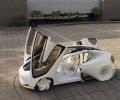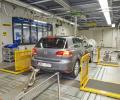From Auto #13: The drive to hydrogen
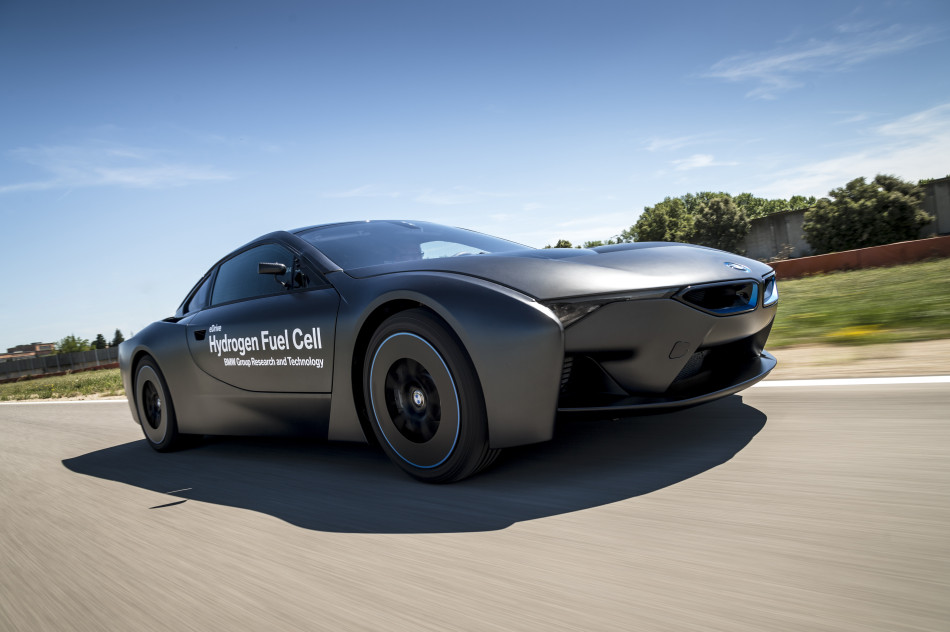
Six years ago, engineer Matthias Klietz was working alongside racing drivers Robert Kubica and Nick Heidfeld at the BMW Formula One team. Now the powertrain expert’s skills are being applied to an entirely different field: the development of hydrogen-powered road cars, known as Fuel Cell Electric Vehicles (FCEVs).
It’s a tantalising prospect: a car fuelled by the world’s most abundant resource and one that emits nothing but water from its exhaust. Critics, however, will argue that hydrogen as an alternative fuel source has been a prospect for a long time, but one that has failed to deliver.
In 2006, hydrogen-powered vehicles looked to be on the cusp of a major breakthrough. BMW produced a small number of 7-series prototypes converted to run on hydrogen, Mazda released bi-fuel, RX-8 sports cars, Hyundai tested a fuel cell prototype in South Korea and Honda had public pilot trials of the FCX hydrogen fuel cell. But the chicken-and-egg dilemma of who would fund the hydrogen refuelling infrastructure was never resolved and the electric car subsequently made a comeback. Hydrogen seemed to be in its death throes.
Not so, says Klietz. “People often ask why BMW stopped developing hydrogen technology, but we never did; we have been working on it constantly for 30 years. Hydrogen offers zero emissions and very high levels of energy storage, so it’s ideal for longer ranges and larger vehicles. Eventually, fuel cells will be cheaper than battery-electric vehicles.”
Now, a new cryogenic hydrogen storage system developed by BMW has given a new 5-series GT prototype a vast 700km driving range on a single tankful and a technical partnership inked with Toyota in 2013 has injected fresh momentum.
BMW and Toyota intend their collaboration to speed up FCEV development, reduce costs and contribute to market standardisation, helping to avoid the confusion caused by the numerous chargers employed by battery-electric cars. In the new 5-series GT prototype, the fuel cell stack is produced by Toyota and the fuel cell auxiliaries by both companies, while BMW manufactures the hydrogen tank, electric motor, fuel cell housing and high-voltage battery.
It works like this: hydrogen is pumped into the 5-series GT at a refuelling station much like you fuel a car with petrol and is stored in a bulletproof ‘tunnel tank’ between the front and rear axles, where a conventional BMW’s propshaft would reside.
But the key is the fuel cell stack under the bonnet. When the driver accelerates, hydrogen is fed to the fuel cell stack where it reacts with oxygen, generating electricity for the 245bhp electric motor that powers the wheels and emitting water from the exhaust.
The fuel cell is also supported by a high-voltage battery at the rear of the vehicle, so energy can be captured during braking and deceleration – similar in concept to a Formula One car’s KERS system – and fed back to the electric motor, reducing hydrogen consumption.
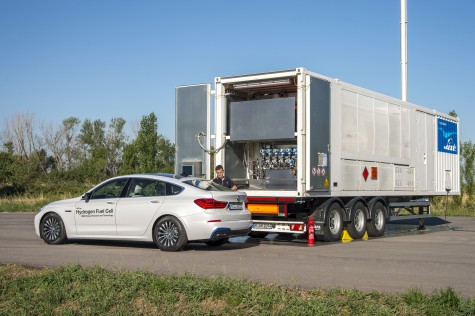
Filling the fuelling gap
A sizeable advantage of hydrogen fuel cell vehicles compared with battery-electric cars is their short refuelling time. A home charge for a battery-electric car can take up to eight hours, while the fastest rapid-chargers give an 80 per cent charge in 30 minutes, enough for around 160km of driving depending on the car. A FCEV can be refuelled in less than five minutes and offer well over twice the range from 4.5kg of hydrogen stored at 700 bar in a conventional hydrogen pump.
However, BMW’s cryogenic hydrogen storage system increases the range to up to 700km in the case of the 5-series GT. The hydrogen is stored at -220deg C, allowing the 5-series GT to hold 7.1kg of hydrogen in its fuel tank. At today’s prices, that equates to a €70 tankful.
The first cryogenic hydrogen filling station has already opened in Munich, a public station operated by Total where BMW engineers can fuel prototype test cars.
“One cryogenic hydrogen pump can provide energy for 100,000km of driving per day, compared with 50,000km per day based on a regular 700-bar pump,” reveals Klietz. “We would offer the customer both systems, the cryogenic system carrying a premium when the car was first ordered. Both would be available at the pump, like leaded and super unleaded, and a different sized nozzle would be fitted to avoid misfuelling.”
As BMW’s own press materials point out, ‘the successful introduction of FCEVs is dependent on the development of a hydrogen infrastructure in the markets concerned’. Of those, key European territories are Germany, Scandinavia and the UK.
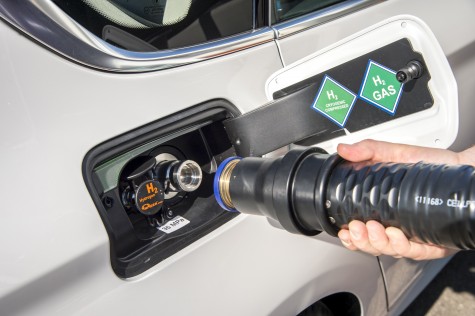
“The infrastructure for hydrogen is cheaper than for battery-electric charging and it’s already there with existing fuel stations,” says Klietz. “But who pays for the hydrogen pumps – the fuel company, the OEM [Original Equipment Manufacturer], the government – is not clear. Europe should look at Asia; it’s a good indicator that you can make into a business case. South Korea has 43 stations with a target of 500 for 2030; Japan has 100 with 800 planned for 2025. Asia will be a driving force for hydrogen storage.”
For Klietz, a switch to hydrogen is a logical – and essential – extension of the on-going drive towards renewable energy. “The need for hydrogen is not only driven by zero-emissions vehicles, it’s essential so we can store renewable energy,” he explains. “After the Fukushima nuclear disaster in Japan, Germany decided to phase out nuclear power and has a renewable energy target of 50 per cent by 2030. This will result in fluctuating energy supply, but we can capture this energy and store it as liquid hydrogen. To reach the government target, we have to start storing energy now.”
The big question is, when will an FCEV like the 5-series GT roll off Munich’s production lines? Klietz smiles, refuses to commit to an on-sale date, but does reveal that BMW hopes its components will be production-ready by 2020.
Could the long-forecast hydrogen breakthrough be just around the corner? This time, it might just be.

 Facebook
Facebook Twitter
Twitter
